Growing Carrots at Home might seem daunting, especially if you’re new to gardening. But trust me, there’s nothing quite as satisfying as pulling a vibrant, crunchy carrot from your own backyard! Imagine biting into a carrot you nurtured from seed, bursting with flavor far superior to anything you’d find in a grocery store. That’s the magic we’re unlocking today!
Carrots have a rich history, dating back thousands of years. Originally cultivated for their aromatic leaves and seeds, the sweet, orange root we know and love today is a relatively modern development. From ancient medicinal uses to becoming a staple in cuisines worldwide, carrots have certainly earned their place in our gardens and on our plates.
Why should you learn these DIY tricks for growing carrots at home? Well, store-bought carrots often lack the freshness and sweetness of homegrown varieties. Plus, gardening is a fantastic way to de-stress, connect with nature, and even save money! This article is packed with simple, effective DIY hacks that will help you overcome common challenges, like poor germination, stunted growth, and pesky pests. I’m going to share my tried-and-true methods for creating the perfect carrot-growing environment, even if you only have a small balcony or patio. Let’s get our hands dirty and grow some delicious carrots together!
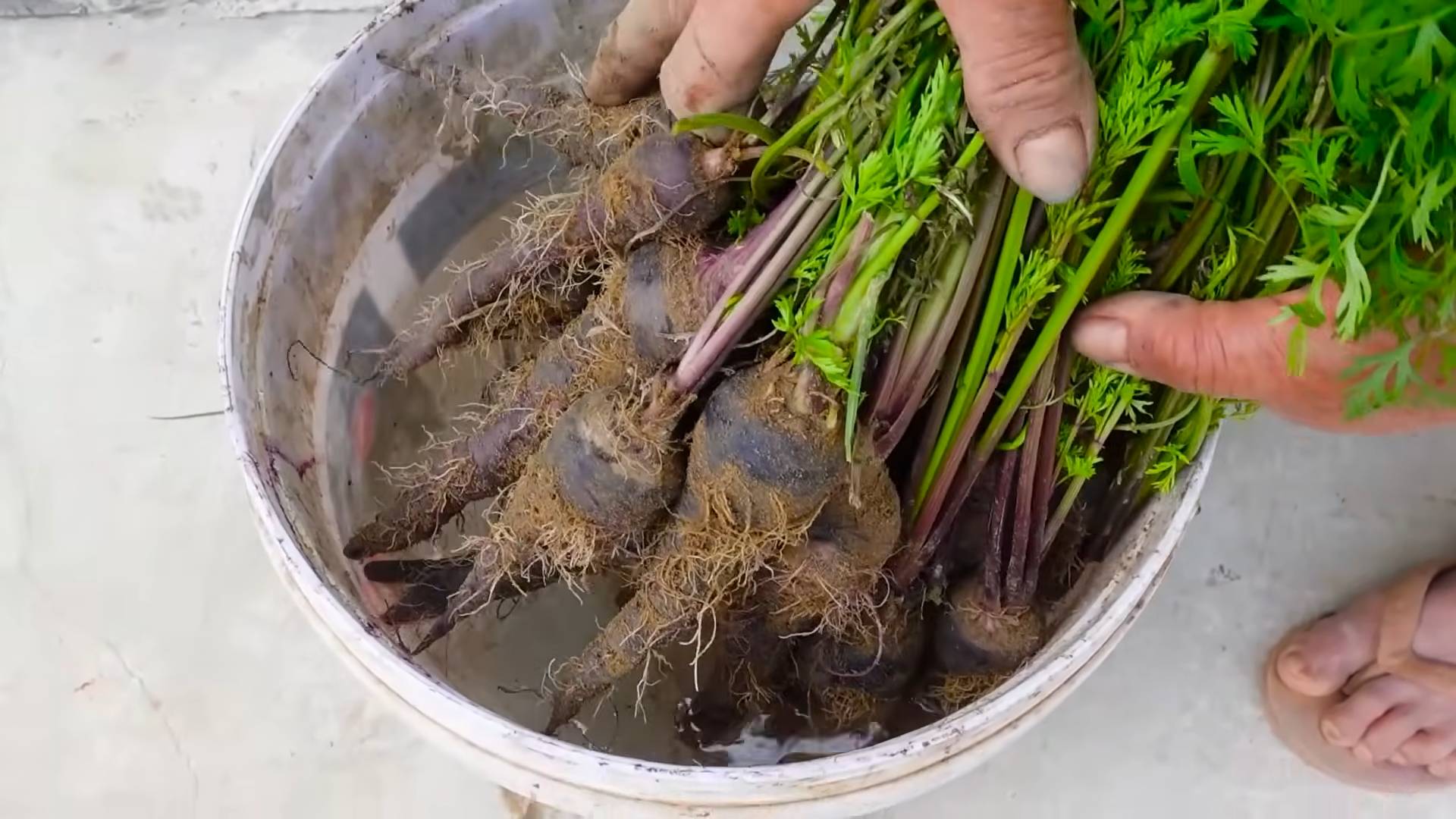
Growing Carrots at Home: A Beginner’s Guide to Crunchy Success
Hey there, fellow gardening enthusiasts! I’m so excited to share my experiences and tips on growing carrots right in your own backyard (or even in containers!). Carrots are a fantastic addition to any garden – they’re delicious, nutritious, and surprisingly easy to grow once you get the hang of it. Let’s dive in!
Choosing the Right Carrot Variety
Before you even think about planting, it’s crucial to pick the right carrot variety for your climate and garden space. Different varieties have different shapes, sizes, and maturity times. Here’s a quick rundown of some popular choices:
* **Nantes:** These are classic, cylindrical carrots with a sweet flavor. They’re relatively short and mature quickly, making them a great option for beginners.
* **Danvers:** These are longer, tapered carrots that are known for their robust flavor and good storage capabilities.
* **Chantenay:** These are short, thick, and conical carrots, perfect for heavy or rocky soils. They’re also very sweet and flavorful.
* **Baby Carrots:** Varieties like ‘Thumbelina’ are round and small, ideal for container gardening or for those who want a quick harvest.
* **Heirloom Varieties:** Consider exploring heirloom varieties like ‘Purple Haze’ or ‘Yellowstone’ for unique colors and flavors.
Consider your soil type and growing season when making your choice. If you have heavy clay soil, opt for shorter, stouter varieties like Chantenay. If you have a long growing season, you can try longer varieties like Danvers.
Preparing Your Carrot Bed
Carrots need loose, well-drained soil to thrive. Rocks and clumps can cause them to fork or become misshapen. Here’s how I prepare my carrot bed:
* **Timing is Key:** Start preparing your bed a few weeks before you plan to sow your seeds. This gives the soil time to settle.
* **Clear the Area:** Remove any rocks, weeds, roots, or debris from the planting area. Carrots hate competition!
* **Loosen the Soil:** Use a garden fork or tiller to loosen the soil to a depth of at least 12 inches. This is super important for long, straight carrots.
* **Amend the Soil:** Carrots prefer slightly acidic soil with a pH between 6.0 and 6.8. Amend the soil with compost, well-rotted manure, or peat moss to improve drainage and fertility. Avoid using fresh manure, as it can cause forking.
* **Create Raised Beds (Optional):** If your soil is particularly heavy or poorly drained, consider creating raised beds. This will improve drainage and allow the soil to warm up faster in the spring.
* **Smooth the Surface:** Rake the surface of the bed smooth to create a fine seedbed. This will help ensure good seed-to-soil contact.
Sowing Carrot Seeds
Carrot seeds are tiny and can be tricky to sow evenly. Here’s my method for getting the best results:
* **Timing is Everything:** Carrots are a cool-season crop and can be planted in early spring or late summer. Check your local frost dates to determine the best time to plant. I usually aim for 2-3 weeks before the last expected frost in spring, or 8-10 weeks before the first expected frost in fall.
* **Create Furrows:** Use a hoe or trowel to create shallow furrows in the prepared bed, about 1/4 to 1/2 inch deep and 1-2 inches apart.
* **Sow the Seeds:** Sprinkle the carrot seeds thinly and evenly along the furrows. Carrot seeds are notoriously small, so don’t worry if you sow them a little thickly. You can always thin them later.
* **Cover the Seeds:** Gently cover the seeds with a thin layer of soil or fine sand.
* **Water Gently:** Water the bed gently with a watering can or hose with a gentle spray nozzle. Avoid washing away the seeds.
* **Keep the Soil Moist:** Keep the soil consistently moist until the seeds germinate. This is crucial for successful germination. You can cover the bed with burlap or shade cloth to help retain moisture.
* **Mark Your Rows:** Label your rows with the carrot variety and planting date. This will help you keep track of your progress.
Thinning Carrot Seedlings
Thinning is essential for giving your carrots enough space to develop properly. If you don’t thin them, they’ll compete for resources and you’ll end up with small, stunted carrots.
* **When to Thin:** Thin your carrot seedlings when they are about 2-3 inches tall.
* **How to Thin:** Gently pull out the weaker seedlings, leaving the strongest ones spaced about 1-2 inches apart.
* **Water After Thinning:** Water the bed after thinning to help settle the soil around the remaining seedlings.
* **Second Thinning (Optional):** If your carrots are still crowded after the first thinning, you can thin them again a few weeks later, leaving them spaced about 3-4 inches apart.
Caring for Your Carrot Plants
Once your carrots are established, they’ll need regular care to thrive.
* **Watering:** Carrots need consistent moisture, especially during dry spells. Water deeply and regularly, aiming for about 1 inch of water per week. Avoid overwatering, as this can lead to root rot.
* **Weeding:** Keep the carrot bed free of weeds. Weeds compete with carrots for nutrients and water. Hand-pull weeds carefully to avoid disturbing the carrot roots.
* **Fertilizing:** Carrots don’t need a lot of fertilizer, but a side dressing of compost or a balanced organic fertilizer can help boost growth. Apply fertilizer about halfway through the growing season.
* **Mulching:** Mulch around your carrot plants with straw, hay, or wood chips to help retain moisture, suppress weeds, and regulate soil temperature.
* **Pest Control:** Carrots can be susceptible to pests like carrot rust flies and aphids. Inspect your plants regularly and take action if you see any signs of infestation. You can use organic pest control methods like insecticidal soap or neem oil.
* **Sunlight:** Ensure your carrots receive at least 6 hours of sunlight per day.
Harvesting Your Carrots
The moment you’ve been waiting for! Harvesting your own homegrown carrots is incredibly rewarding.
* **When to Harvest:** Carrots are typically ready to harvest 60-80 days after planting, depending on the variety. Check the seed packet for specific maturity times.
* **How to Harvest:** Gently loosen the soil around the carrots with a garden fork or trowel. Grasp the carrot tops firmly and pull straight up. If the carrots are difficult to pull, you may need to loosen the soil further.
* **Wash and Store:** Wash the carrots thoroughly and remove the tops. Store them in the refrigerator in a plastic bag or container. They should keep for several weeks.
* **Succession Planting:** To enjoy a continuous harvest of carrots, sow seeds every 2-3 weeks throughout the growing season.
Troubleshooting Common Carrot Problems
Even with the best care, you might encounter some challenges when growing carrots. Here are some common problems and how to address them:
* **Forked or Misshapen Carrots:** This is usually caused by rocks or compacted soil. Make sure to prepare your bed thoroughly and remove any obstacles.
* **Small Carrots:** This can be caused by overcrowding, poor soil fertility, or insufficient watering. Thin your seedlings properly, amend the soil with compost, and water regularly.
* **Bitter Carrots:** This can be caused by hot weather or inconsistent watering. Provide shade during the hottest part of the day and water deeply and regularly.
* **Carrot Rust Flies:** These pests can damage carrot roots. Use row covers to protect your plants or apply nematodes to the soil.
* **Cracked Carrots:** This is often caused by inconsistent watering, especially after a dry spell. Water deeply and regularly to maintain consistent soil moisture.
Growing Carrots in Containers
Don’t have a garden? No problem! You can still grow carrots in containers.
* **Choose the Right Container:** Select a container that is at least 12 inches deep and wide.
* **Use a Good Quality Potting Mix:** Avoid using garden soil, as it can be too heavy and compacted. Use a well-draining potting mix.
* **Choose the Right Variety:** Opt for shorter, round varieties like ‘Thumbelina’ or ‘Paris Market’.
* **Sow the Seeds:** Sow the seeds directly into the container, following the same instructions as for growing in the ground.
* **Thin the Seedlings:** Thin the seedlings to about 1-2 inches apart.
* **Water Regularly:** Water the container regularly, especially during hot weather.
* **Fertilize:** Fertilize the carrots with a balanced liquid fertilizer every few weeks.
* **Harvest:** Harvest the carrots when they are the desired size.
Growing carrots at home is a rewarding experience. With a little planning and care, you can enjoy fresh, delicious carrots straight from your garden
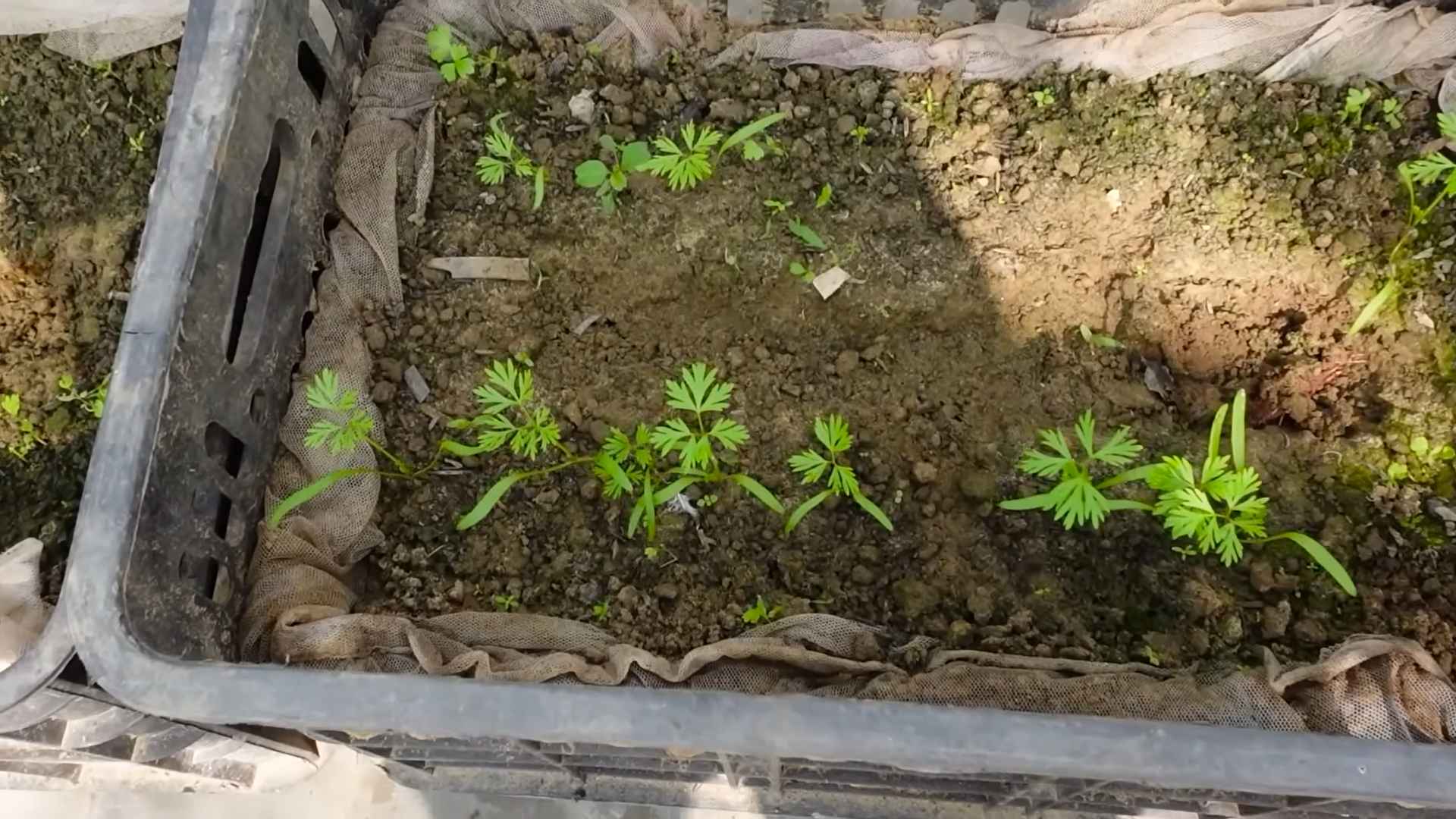
Conclusion
So, there you have it! Growing carrots at home, while it might seem daunting at first, is a surprisingly rewarding experience. We’ve walked you through the essential steps, from selecting the right carrot varieties and preparing your soil to nurturing your seedlings and harvesting your vibrant, homegrown bounty. But why should you bother with all this effort when you can simply buy carrots at the store?
The answer lies in the unparalleled freshness and flavor. Store-bought carrots, while convenient, often lack the intense sweetness and satisfying crunch of those you’ve nurtured yourself. Imagine biting into a carrot you pulled straight from the earth, still slightly damp with soil, bursting with natural sugars and vitamins. That’s an experience you simply can’t replicate with commercially grown produce.
Beyond the superior taste, growing your own carrots offers a sense of accomplishment and connection to nature. It’s a chance to get your hands dirty, learn about the growing process, and appreciate the miracle of transforming a tiny seed into a delicious and nutritious vegetable. Plus, you have complete control over the growing environment, ensuring your carrots are free from harmful pesticides and herbicides.
This DIY trick for **growing carrots at home** isn’t just about saving money or having access to fresher produce; it’s about embracing a more sustainable and fulfilling lifestyle. It’s about connecting with the earth, nourishing your body, and experiencing the joy of growing your own food.
Ready to take your carrot growing to the next level? Consider these variations:
* **Container Gardening:** If you’re short on space, don’t despair! Carrots thrive in containers, as long as they’re deep enough to accommodate the root length. Choose a container at least 12 inches deep and fill it with a well-draining potting mix. This is perfect for balconies, patios, or even indoor gardening.
* **Succession Planting:** To enjoy a continuous harvest of carrots throughout the growing season, practice succession planting. Sow a new batch of seeds every 2-3 weeks. This ensures a steady supply of fresh carrots for your salads, snacks, and soups.
* **Companion Planting:** Carrots benefit from companion planting. Plant them alongside onions, garlic, rosemary, or marigolds to deter pests and improve growth. These companion plants can help repel carrot rust flies and other common carrot pests.
* **Experiment with Varieties:** Don’t limit yourself to orange carrots! Explore different varieties, such as purple, yellow, or white carrots, for a colorful and flavorful twist. Each variety offers a unique taste and texture, adding variety to your meals.
* Carrot Top Pesto: Don’t throw away those carrot tops! They are edible and delicious. Use them to make a vibrant and flavorful pesto. Simply blend them with garlic, nuts, Parmesan cheese, and olive oil for a unique and sustainable twist on a classic sauce.
We’re confident that you’ll find growing carrots at home to be a rewarding and enjoyable experience. So, grab your seeds, prepare your soil, and get ready to harvest your own delicious, homegrown carrots.
We encourage you to try this DIY trick and share your experiences with us! What varieties did you grow? What challenges did you face? What tips and tricks did you discover along the way? Share your photos and stories in the comments below. We can’t wait to hear about your carrot-growing adventures! Happy gardening!
Frequently Asked Questions (FAQ)
What is the best time of year to plant carrots?
The best time to plant carrots depends on your climate. In general, carrots are a cool-season crop and thrive in temperatures between 60°F and 70°F (15°C and 21°C). For most regions, this means planting in early spring or late summer for a fall harvest. In warmer climates, you can plant carrots throughout the winter. Check your local planting calendar for specific dates.
How deep should I plant carrot seeds?
Carrot seeds are tiny and should be planted shallowly. Sow them about ¼ to ½ inch deep and gently cover them with soil. Be sure to keep the soil consistently moist until the seeds germinate.
How long does it take for carrots to germinate?
Carrot seeds can be slow to germinate, typically taking 1-3 weeks. To speed up germination, keep the soil consistently moist and consider using a seed-starting heat mat. You can also pre-sprout the seeds by placing them in a damp paper towel inside a plastic bag for a few days before planting.
What kind of soil is best for growing carrots?
Carrots need loose, well-draining soil to grow properly. Rocky or compacted soil can lead to stunted or misshapen carrots. Amend your soil with compost or other organic matter to improve drainage and fertility. Avoid using heavy clay soil, as it can hinder root development. Sandy loam soil is ideal.
How often should I water my carrots?
Carrots need consistent moisture, especially during germination and early growth. Water deeply and regularly, aiming for about 1 inch of water per week. Avoid overwatering, as this can lead to root rot. Use a soaker hose or drip irrigation to deliver water directly to the roots.
How much sunlight do carrots need?
Carrots need at least 6 hours of sunlight per day to thrive. Choose a sunny location in your garden for planting. If you’re growing carrots in containers, make sure they receive adequate sunlight.
So, there you have it! Growing carrots at home, while it might seem daunting at first, is a surprisingly rewarding experience. We’ve walked you through the essential steps, from selecting the right carrot varieties and preparing your soil to nurturing your seedlings and harvesting your vibrant, homegrown bounty. But why should you bother with all this effort when you can simply buy carrots at the store?
The answer lies in the unparalleled freshness and flavor. Store-bought carrots, while convenient, often lack the intense sweetness and satisfying crunch of those you’ve nurtured yourself. Imagine biting into a carrot you pulled straight from the earth, still slightly damp with soil, bursting with natural sugars and vitamins. That’s an experience you simply can’t replicate with commercially grown produce.
Beyond the superior taste, growing your own carrots offers a sense of accomplishment and connection to nature. It’s a chance to get your hands dirty, learn about the growing process, and appreciate the miracle of transforming a tiny seed into a delicious and nutritious vegetable. Plus, you have complete control over the growing environment, ensuring your carrots are free from harmful pesticides and herbicides.
This DIY trick for **growing carrots at home** isn’t just about saving money or having access to fresher produce; it’s about embracing a more sustainable and fulfilling lifestyle. It’s about connecting with the earth, nourishing your body, and experiencing the joy of growing your own food.
Ready to take your carrot growing to the next level? Consider these variations:
* **Container Gardening:** If you’re short on space, don’t despair! Carrots thrive in containers, as long as they’re deep enough to accommodate the root length. Choose a container at least 12 inches deep and fill it with a well-draining potting mix. This is perfect for balconies, patios, or even indoor gardening.
* **Succession Planting:** To enjoy a continuous harvest of carrots throughout the growing season, practice succession planting. Sow a new batch of seeds every 2-3 weeks. This ensures a steady supply of fresh carrots for your salads, snacks, and soups.
* **Companion Planting:** Carrots benefit from companion planting. Plant them alongside onions, garlic, rosemary, or marigolds to deter pests and improve growth. These companion plants can help repel carrot rust flies and other common carrot pests.
* **Experiment with Varieties:** Don’t limit yourself to orange carrots! Explore different varieties, such as purple, yellow, or white carrots, for a colorful and flavorful twist. Each variety offers a unique taste and texture, adding variety to your meals.
* Carrot Top Pesto: Don’t throw away those carrot tops! They are edible and delicious. Use them to make a vibrant and flavorful pesto. Simply blend them with garlic, nuts, Parmesan cheese, and olive oil for a unique and sustainable twist on a classic sauce.
We’re confident that you’ll find growing carrots at home to be a rewarding and enjoyable experience. So, grab your seeds, prepare your soil, and get ready to harvest your own delicious, homegrown carrots.
We encourage you to try this DIY trick and share your experiences with us! What varieties did you grow? What challenges did you face? What tips and tricks did you discover along the way? Share your photos and stories in the comments below. We can’t wait to hear about your carrot-growing adventures! Happy gardening!
Frequently Asked Questions (FAQ)
What is the best time of year to plant carrots?
The best time to plant carrots depends on your climate. In general, carrots are a cool-season crop and thrive in temperatures between 60°F and 70°F (15°C and 21°C). For most regions, this means planting in early spring or late summer for a fall harvest. In warmer climates, you can plant carrots throughout the winter. Check your local planting calendar for specific dates.
How deep should I plant carrot seeds?
Carrot seeds are tiny and should be planted shallowly. Sow them about ¼ to ½ inch deep and gently cover them with soil. Be sure to keep the soil consistently moist until the seeds germinate.
How long does it take for carrots to germinate?
Carrot seeds can be slow to germinate, typically taking 1-3 weeks. To speed up germination, keep the soil consistently moist and consider using a seed-starting heat mat. You can also pre-sprout the seeds by placing them in a damp paper towel inside a plastic bag for a few days before planting.
What kind of soil is best for growing carrots?
Carrots need loose, well-draining soil to grow properly. Rocky or compacted soil can lead to stunted or misshapen carrots. Amend your soil with compost or other organic matter to improve drainage and fertility. Avoid using heavy clay soil, as it can hinder root development. Sandy loam soil is ideal.
How often should I water my carrots?
Carrots need consistent moisture, especially during germination and early growth. Water deeply and regularly, aiming for about 1 inch of water per week. Avoid overwatering, as this can lead to root rot. Use a soaker hose or drip irrigation to deliver water directly to the roots.
How much sunlight do carrots need?
Carrots need at least 6 hours of sunlight per day to thrive. Choose a sunny location in your garden for planting. If you’re growing carrots in containers, make sure they receive adequate sunlight.
How do I thin carrot seedlings?
Thinning is essential for giving carrots enough space to grow. Once the seedlings are a few inches tall, thin them to about 2-3 inches apart. Gently pull out the extra seedlings, being careful not to disturb the roots of the remaining plants. You can eat the thinned seedlings as microgreens.
What are common carrot pests and diseases?
Common carrot pests include carrot rust flies, aphids, and nematodes. Diseases include leaf blight and root rot. Use organic pest control methods, such as insecticidal soap or neem oil, to control pests. Ensure good drainage and avoid overwatering to prevent diseases. Companion planting with onions or garlic can also help deter pests.
When are carrots ready to harvest?
Carrots are typically ready to harvest 60-80 days after planting, depending on the variety. Check the seed packet for specific maturity dates. You can harvest carrots when they reach the desired size. Gently loosen the soil around the carrots and pull them out by the tops.
How do I store harvested carrots?
To store harvested carrots, remove the tops and gently brush off any excess soil. Store them in a cool, dark, and humid place, such as a refrigerator or root cellar. You can also store them in a container filled with damp sand or sawdust. Carrots can last for several months when stored properly.
Can I grow carrots in containers?
Yes, carrots can be successfully grown in containers. Choose a container that is at least 12 inches deep and fill it with a well-draining potting mix. Make sure the container has drainage holes to prevent waterlogging. Dwarf or shorter varieties of carrots are best suited for container gardening.
What are some good companion plants for carrots?
Good companion plants for carrots include onions, garlic, rosemary, sage, and marigolds. These plants can help deter pests and improve growth. Avoid planting carrots near fennel or dill, as they can inhibit carrot growth.
Why are my carrots forked or misshapen?
Forked or misshapen carrots are often caused by rocky or compacted soil. Amend your soil with compost or other organic matter to improve drainage and fertility. Remove any rocks or debris from the soil before planting. Overcrowding can also contribute to misshapen carrots, so be sure to thin your seedlings properly.
Can I eat the carrot greens?
Yes, carrot greens are edible and nutritious. They have a slightly bitter taste and can be used in salads, soups, or pesto. Be sure to wash them thoroughly before eating.
How can I improve the sweetness of my carrots?
The sweetness of carrots can be improved by providing them with consistent moisture and sunlight. Allowing carrots to mature fully before harvesting can also enhance their sweetness. Some gardeners believe that a light frost can also increase the sugar content of carrots.

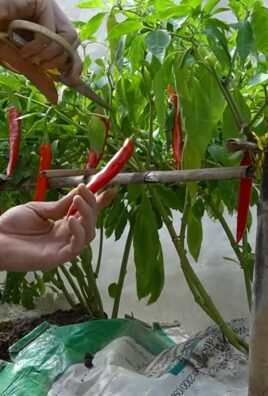
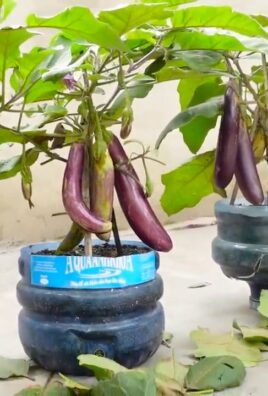
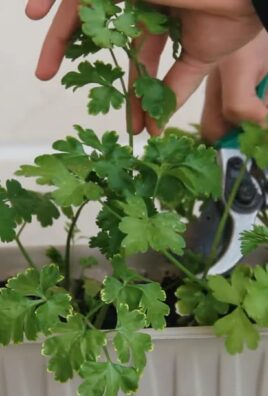
Leave a Comment